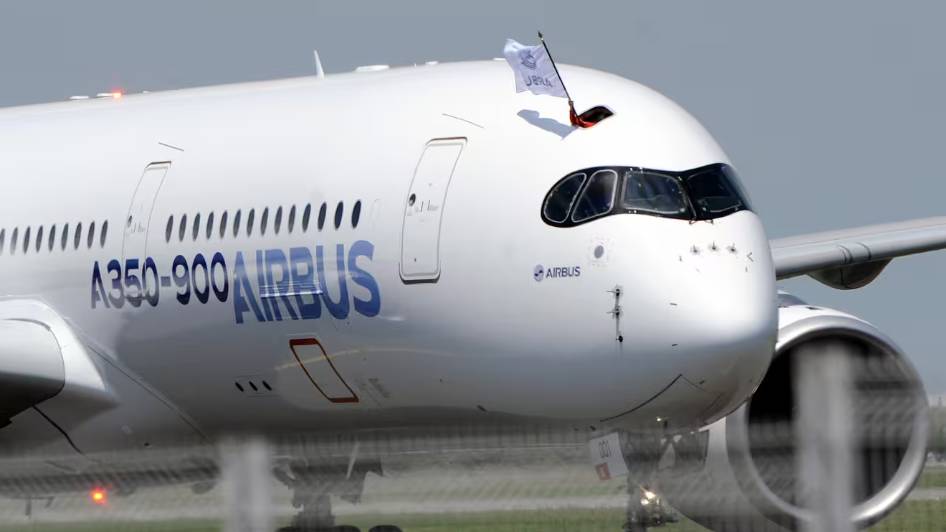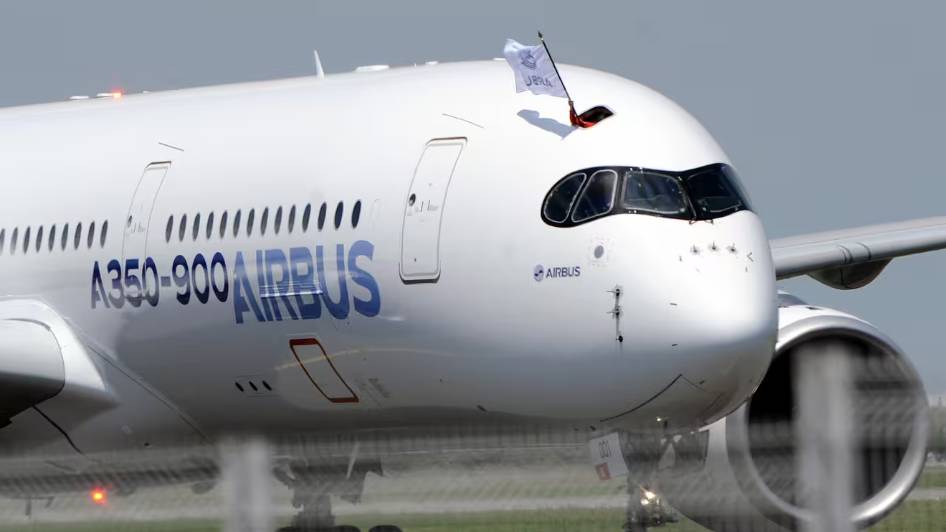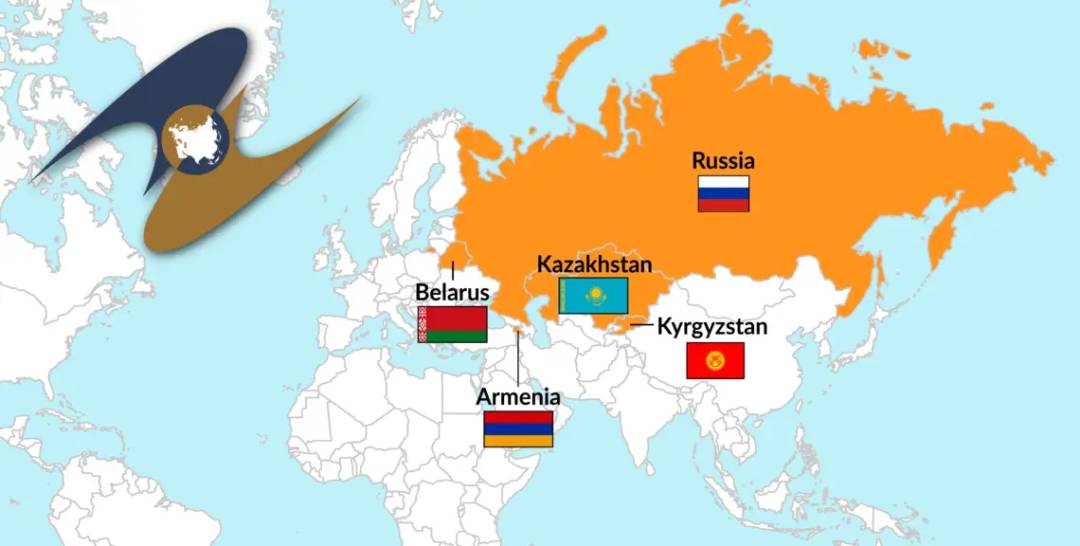A Comprehensive Analysis of Cathay Pacific's Response to a Major Airbus Engine Failure
In the still, critical hours of September 2, at 0:07 a.m. local time, Cathay Pacific Airways flight CX383, an Airbus A350, bravely embarked on its long journey from Hong Kong, China, to Zurich, Switzerland, carrying the expectations of many travelers. However, fate seemed to put the flight to a severe test the moment it took off. Just a short time after takeoff, the experienced pilots were keenly aware of the sudden illumination of the aircraft's warning lights, which seemed to be a danger signal urgently calling for attention. With professionalism and instinctive alertness, the pilot quickly made a preliminary judgment of the aircraft's condition and highly suspected that the engine was on fire. In the nick of time, the pilot did not hesitate for a moment and decisively notified the airport staff immediately, requesting in a firm tone to turn back.

Image Source: Sourced from the Internet
In the sky, the airplane carrying hopes and challenges began a thrilling “adventure”. In order to ensure a safe landing, the airplane made two big circles in the air, as if it was in a tense circle with fate. Every second was filled with uncertainty and tension. Then the airplane came out over the vast sea and began an emergency “fuel release” operation. This process lasted for about half an hour, and the fuel spilled continuously as if the airplane was trying to lighten its own burden, making final preparations for the upcoming safe landing. Finally, with the joint efforts and precise operation of the entire crew, the airplane landed safely in Hong Kong. This moment was like a declaration of victory. Fortunately, there were no casualties in this thrilling incident, which was certainly a gratifying result. By just after 5am, after a series of coordination and arrangements, passengers, with mixed feelings, were finally able to embark on their onward journey on another flight without incident.
In a statement issued later, Cathay Pacific took a serious and responsible stance, stating that this was the first time in the world that an Airbus A350 had suffered an engine component failure. The news was like a boulder thrown into a calm lake, causing widespread concern and shock. The flight in question was fitted with XWB-97 turbofan engines from Rolls-Royce, the British aircraft engine manufacturer. After detailed investigation and analysis, it was determined that the faulty component involved a fuel nozzle. Cathay Pacific emphasized that it has always followed all the engine manufacturer's maintenance regulations to the letter, and has not dared to be lax in any aspect of the process. In its day-to-day operations, the airline implements rigorous maintenance procedures to ensure the safety of its fleet in all aspects, starting with every detail. Upon discovering the engine component failure, Cathay Pacific quickly activated its emergency response mechanism and acted efficiently to inform the aircraft and engine manufacturers as well as the relevant regulatory authorities of the situation in a timely manner.

Image Source: Sourced from the Internet
In view of the seriousness of the failure and the high priority given to safety, Cathay Pacific decided to take the most comprehensive and rigorous “Preventive Checks” possible. In a bold move, the airline announced that it would immediately launch a comprehensive and detailed inspection of all 48 of its A350 aircraft, including the A350-900 and A350-1000. The operation was a major “health check” aimed at thoroughly identifying potential risks. The intense and well-organized inspections revealed that 15 of the aircraft needed to have their engines and other critical parts replaced to ensure their safety. However, it is heartening to note that with the hard work and dedication of all maintenance staff, three of the repairs have already been completed. Cathay Pacific Airways said it is now making every effort to actively source relevant parts overseas in order to complete the repairs as soon as possible and resume normal flight operations. The company has mobilized all available resources and is closely communicating and coordinating with overseas suppliers through a variety of channels, aiming to transport the required parts to Hong Kong, China, as quickly as possible in order to give full support to the smooth running of the repair work.
Inevitably, however, the grounding of some of the aircraft for maintenance had a significant impact on Cathay Pacific's flight operations. To minimize the impact on passengers, Cathay Pacific quickly rescheduled some of its flights. In the process, the airline's operations team worked overtime to intensely reschedule and coordinate flight plans. Cathay Pacific canceled 24 pairs of round-trip flights on September 2 and 3, and 10 pairs of round-trip flights on September 4, in quick succession. These cancellations, while unavoidable, were necessary to ensure safety. To date, the total number of flights affected this week is 68. The flights affected by the groundings are mainly to and from Tokyo and Osaka in Japan, Taipei in China, Bangkok in Thailand and Singapore. Well aware of the anxiety and concern of travelers, Cathay Pacific has acted swiftly and proactively to notify all affected customers and offer them a variety of solutions, including the provision of alternative flight options and free ticket changes, in order to maximize passenger satisfaction. According to insiders, all Cathay Pacific staff are working at full capacity and the airline expects all A350 flights to be back in the air by this Saturday, September 7th.
On an equally challenging day on August 31, Cathay Pacific flight CX431, operated by an Airbus A330, was scheduled to fly from Taiwan to Hong Kong. As the aircraft accelerated for takeoff, something unexpected happened. An unidentified fire suddenly appeared in the right engine, which instantly shattered the original calm and was followed by two deafening explosions. This sudden change of events has plunged the entire airport into a tense atmosphere. The flight crew made a decisive decision to abort the takeoff at the first time, which was undoubtedly correct and timely, fully reflecting their professionalism and ability to cope with the crisis. Subsequently, under the orderly organization of the flight crew, 275 passengers left the aircraft quickly and safely, with no injuries, which was a blessing in disguise. After a short wait and coordination, they then took another flight to Hong Kong without incident.
The Kaohsiung Airport responded quickly, giving a detailed account of the circumstances surrounding the flight in question. The flight was originally scheduled to depart at 11:20 am, however, due to some unforeseen reasons, the flight was delayed until 11:54 am. However, fate seemed to have played a joke on the flight once again, as there was a malfunction during takeoff and the flight had to request to taxi back to the tarmac at 12:15pm. The details of the subsequent situation have aroused great concern from all sides, and the relevant departments have quickly launched an in-depth investigation and analysis, which has yet to be further clarified. The website of the Hong Kong International Airport (HKIA) updated the flight information in the afternoon of the same day, showing that the status of flight CX431 was “canceled”.
According to the details on the Airbus website, as of July this year, the number of orders for the A350 worldwide has reached an impressive 1,327, which fully demonstrates the popularity of this model of aircraft in the global aviation market and its wide application prospects. Its total number of deliveries is 613, with 612 aircraft in operation. These aircraft are busily plying the skies around the world, contributing to global air transportation. As widely reported in the media, Cathay Pacific is already one of the largest operators of the Airbus A350, with a fleet of 47 aircraft of this model, including two different variants, the A350-900 and the A350-1000. These aircraft are mainly responsible for operating international routes, connecting important cities around the world, providing important transportation for people's travel and international exchanges.

Image Source: Sourced from the Internet
Over the course of its history, Cathay Pacific has continued to invest in and operate more Airbus aircraft. In December last year, Cathay Pacific decisively ordered a new generation of six A350F freighters from Airbus, a move that demonstrates the airline's proactive approach and strong confidence in the future of the air cargo market. The company plans to begin taking delivery of these freighters in 2027 and has the right to purchase an additional 20 aircraft in line with market demand and the company's growth, leaving plenty of room for future growth. In August this year, Cathay Pacific again demonstrated its aggressive growth by placing an order for a further 30 A330-900s, an order that further strengthens the airline's fleet. The order further strengthens Cathay Pacific's fleet. Cathay Pacific also has the right to purchase an additional 30 aircraft in response to subsequent changes in the market and in line with the company's operational needs, laying a solid foundation for the company's continued growth.
However, the successive incidents of aircraft engine failure have undoubtedly been a wake-up call for Cathay Pacific. Cathay Pacific is keenly aware that in the high-risk and demanding industry of air transportation, safety always comes first. The company must respond to these challenges with a more rigorous attitude and more efficient actions, constantly improving its safety management system and operational mechanisms to ensure the safety of every passenger's life and the smooth operation of every flight. At the same time, Cathay Pacific will also actively work closely with the aircraft manufacturer, engine manufacturer and relevant regulatory agencies to analyze the cause of the failure in depth and take effective improvement measures to prevent the recurrence of similar incidents. In the future, Cathay Pacific will continue to uphold its philosophy of safety first and service foremost, and will continue to enhance its core competitiveness and contribute to the development of global air transportation.
-------- END --------






